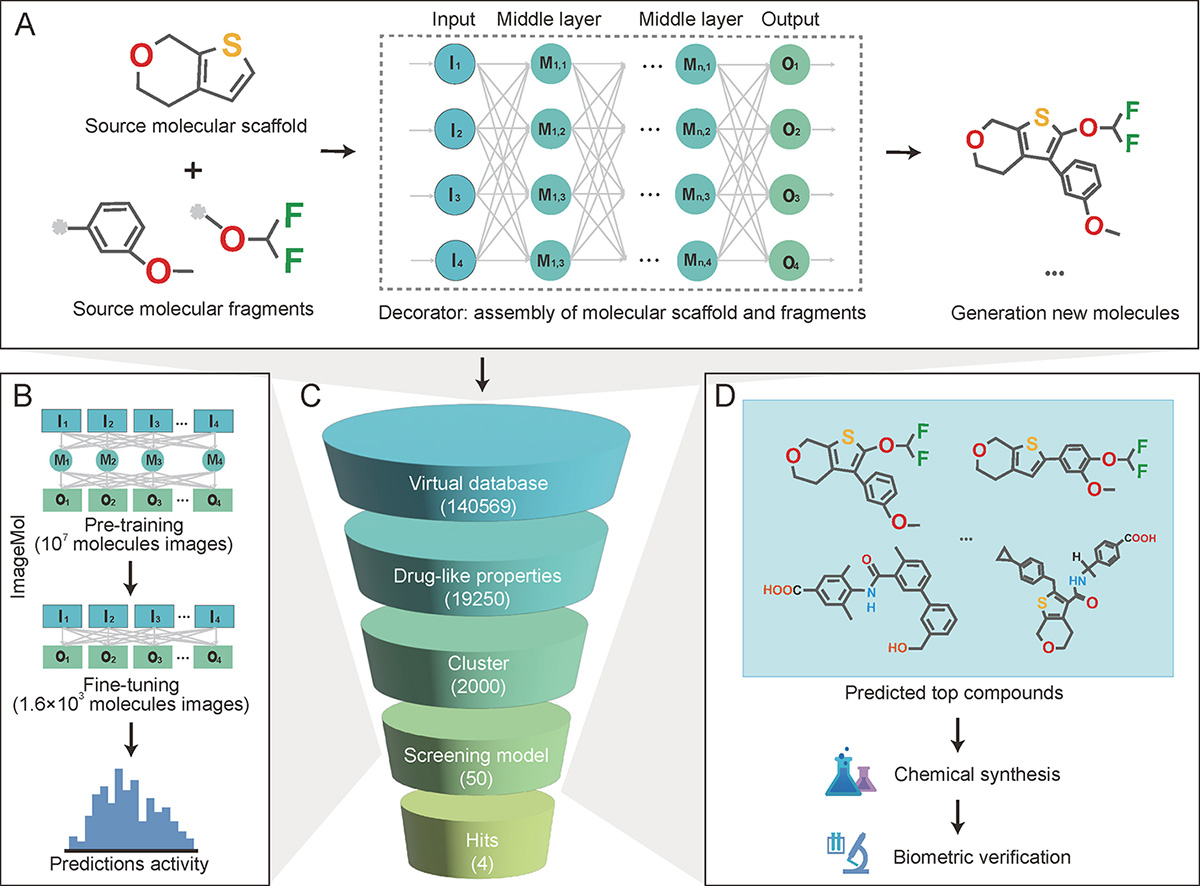Figure 1

Download original image
Establishment of the image-guided antagonist discovery workflow. (A) Illustration of the virtual compound library generator process: known active molecules are fragmented into scaffolds and molecular fragments, which are then reassembled using a deep learning model (decorator) to generate diverse and novel molecules. These molecules form the virtual compound library for further screening. (B) The construction process of the screening model: the EP4 activity dataset was used to finetune the property prediction model, ImageMol, which had been pre-trained on a large-scale self-supervised dataset. This resulted in a predictor capable of determining whether a molecule is active. (C) Thumbnails of virtual filters: From top to bottom, the steps and corresponding changes in the number of compounds during the process of screening the final hit compounds from the large-scale generated dataset are shown. (D) Description of the process for further manual screening, chemical synthesis, and biological verification: the top 50 compounds identified by the screening model were selected for these subsequent steps.
Current usage metrics show cumulative count of Article Views (full-text article views including HTML views, PDF and ePub downloads, according to the available data) and Abstracts Views on Vision4Press platform.
Data correspond to usage on the plateform after 2015. The current usage metrics is available 48-96 hours after online publication and is updated daily on week days.
Initial download of the metrics may take a while.

